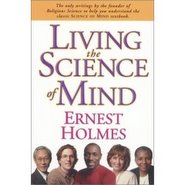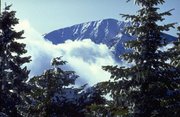
Photo; Black Eye Nebula
Beyond Reason
That which we look at
But cannot see is the invisible.
That which we listen to
But cannot hear is the inaudible.
That which we reach for
But cannot grasp is the intangible.
Beyond reason, these three merge,
Contradicting experience.
Their rising side isn’t bright,
Their setting side isn’t dark.
Sense-less, unnamable,
They return to the realms of nothingness.
Form without form,
Image without image,
Indefinable, ineluctable, elusive.
Confronting them, you see no beginning,
Following them, you see no end.
Yes, riding the plowless plow
Can seed the timeless Tao,
Harvesting the secret
Transcendence of the Now.
Translator; Ralph Alan Dale
Verse 14
Another Version from Wayne Dyer
Living the Wisdom of the Tao..
That which cannot be seen is called invisible.
That which cannot be heard is called inaudible.
That which cannot be held is called intangible.
These lines cannot be defined
Therefore, they are merged as one.
Each of these three is subtle for description.
By intuition you can see it,
Hear it,
And feel it.
Then the unseen,
Unheard,
and untouched
are present in one.
Its rising brings no dawn,
Its setting brings no darkness
It goes on and one, unnamable,
Returning into nothingness.
Approach it and there is no beginning;
Follow it and there is no end.
You cannot know it, but you can be it,
At ease in your own life.
Discovering how things have always been
Brings one into harmony with the way.
Beyond Reason
That which we look at
But cannot see is the invisible.
That which we listen to
But cannot hear is the inaudible.
That which we reach for
But cannot grasp is the intangible.
Beyond reason, these three merge,
Contradicting experience.
Their rising side isn’t bright,
Their setting side isn’t dark.
Sense-less, unnamable,
They return to the realms of nothingness.
Form without form,
Image without image,
Indefinable, ineluctable, elusive.
Confronting them, you see no beginning,
Following them, you see no end.
Yes, riding the plowless plow
Can seed the timeless Tao,
Harvesting the secret
Transcendence of the Now.
Translator; Ralph Alan Dale
Verse 14
Another Version from Wayne Dyer
Living the Wisdom of the Tao..
That which cannot be seen is called invisible.
That which cannot be heard is called inaudible.
That which cannot be held is called intangible.
These lines cannot be defined
Therefore, they are merged as one.
Each of these three is subtle for description.
By intuition you can see it,
Hear it,
And feel it.
Then the unseen,
Unheard,
and untouched
are present in one.
Its rising brings no dawn,
Its setting brings no darkness
It goes on and one, unnamable,
Returning into nothingness.
Approach it and there is no beginning;
Follow it and there is no end.
You cannot know it, but you can be it,
At ease in your own life.
Discovering how things have always been
Brings one into harmony with the way.




1 comment:
Sun Salutations, or Surya Namaskar, are traditionally performed in the morning to greet the new day.
The sequence of 8 postures can be a complete practice in itself, or can prepare you for a longer asana routine.
Sun Salutes are often performed in sets of 5, but if you are new to the practice it's wise to begin with 2 or 3.
Each time you flow through this sequence, synchronize your breath with the movements of your body.
Surya namaskar's sequence of postures is most scientific as it completes the circuit within the body.
The cycle of blood flowing in and out from the heart into the right and left sides of the body is completed.
Since the sequence is, in essence, a humble adoration of the light and insight of the self, it's essential to practice Sun Salutation in a spirit of devotion and with your awareness turned always inward toward the heart.
Make each movement as mindful and precise as possible, especially as you near the end of your rounds, when fatigue can lead to sloppiness.
1. To begin, stand in Tadasana (Mountain Pose). Distribute your weight evenly over both feet. Establish a slow, steady rhythm for your breath. Find your center.
2. Next, inhale and stretch your arms out to the side and overhead into Urdhva Hastasana (Upward Hand Pose). Reach your heart and arms to the heavens, sending your greeting to the sun.
3. As you exhale, hollow out your belly and fold into Uttanasana (Standing Forward Bend), connecting down into the earth. Keep your legs firmly engaged.
4. Inhale and lengthen your spine forward into Ardha Uttanasana (Half Standing Forward Bend). In this pose, the gaze is lifted, the spine is extended, and the fingertips can stay on the floor or rise to the shins.
5. Exhale and step or lightly hop your feet back behind you into Plank Pose. Your wrists should be flat on the floor, shoulder-distance apart, and your feet should be at hip distance. Take a full breath in as you lengthen through your spine.
6. Exhale and lower into Chaturanga Dandasana (Four-Limbed Staff Pose), keeping your legs straight and pushing back into your heels or bringing your knees to the floor. Build heat in the center of your body as you hold this challenging posture.
7. Inhale and carve your chest forward into Urdhva Mukha Svanasana (Upward-Facing Dog), directing that energy out from your heart. Pull your shoulders back and open your collarbones. Engage your legs but relax your gluteal muscles.
8. Exhale and roll over the toes, coming into Adho Mukha Svanasana (Downward-Facing Dog Pose). Ground down through your hands and feet as you lengthen your spine. Remain here for five breaths.
9. On your fifth exhale, bend your knees and look between your hands. Then inhale and step or lightly hop your feet between your hands, returning to Ardha Uttanasana.
10. Exhale back to Uttanasana, surrendering into the fold.
11. Inhale, reaching your arms out wide to your sides and coming to stand through a flat back. Feel a renewed sense of energy as you draw your arms overhead into Urdhva Hastasana.
12. Exhale and return to Tadasana, your home base. Remain here for a few breaths, feeling the movement of energy through your body, or continue on to your next salute.
Post a Comment